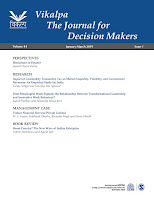Water
ATMS: Causing a Silent Revolution
It
was a hot summer afternoon in New Delhi, India, and Mr. Siya Ram, the Group General Manager of Rail Neer, the packaged water brand of Indian Railway Catering and
Tourism Corporation Ltd (IRCTC), was
having his lunch in his office on the 11th floor of The Statesman House, the
corporate headquarters of IRCTC.
His eyes fell on a group of 10–12 people crowding a road-side
stall buying bottled chilled water to quench their thirst.
His
thoughts flew back to the event yesterday, where he launched an Automatic Water
Vending Machine at the New Delhi railway station, a product developed for the
Indian Railways (IR) by private manufacturers. The vending machine made
purified and chilled drinking water available to customers at busy platforms of
railway stations, dispensing different amounts ranging from 300 ml to 5 l with
an option to collect the water in a packaged or a refill option.
As
he cast his eyes again on the road-side stall selling water, now teeming with a different set of people, he wondered if he was on the verge of a solution that
provided clean drinking water at public places in India.
He
rued that despite
70 years of independence; a large population still lacked access to clean
drinking water and were either exploited by corporations or forced
to use water of suspect quality. The huge volume of people traveling by IR on
a daily basis made him hope that intervention by railways in the packaged
drinking water segment could harbinger change across geographies and societies
in the country. He, therefore, felt that this was an opportunity for the IR to revolutionize this product category.
With
this came about Water ATMs at the Indian Railways.
The challenges in providing affordable clean water to the masses—
Ø The water ATM project was not a priority for
the officials at railway stations.
Ø They had to meet their daily responsibilities
and neither IRCTC nor the vendors chosen by IRCTC to implement water ATMs had
an authority to enforce the agreement at the local level.
Ø In addition, railway stations stood to gain
only 15 percent of the revenues generated through water ATMs.
Ø Vendors had begun losing interest and were now
reluctant to apply for new licenses.
Ø Pressure from seniors to install water ATMs at
a large number of railway stations.
His long experience in the railways told him
that the solution was in managing relationships on a day-to-day basis at ground
zero. He needed to put in place a framework within which the relationships
could be managed. The legacy of IR of more than 100 years had built-in a
rigidity in the system that was difficult to shake off.
—Excerpt
taken from Water ATMs of Indian Railways: Causing a
Silent Revolution in Vikalpa:
The Journal for Decision Makers
Liked
what you read? You may also like:
→ Exploring Linkages between Industrial Innovation and Public Policy
→ Predicting Indian Shoppers’ Malls Loyalty Behaviour


Stumbled upon this website on facebook, the service works as advertised. The paper that they submitted didn't have plagiarism, and the writer followed my lengthy and detailed rubric. The paper returned a perfect score, very thankful for finding phd research proposal service as I'll be using them every week for my writing assignments and discussion board posts.
ReplyDelete